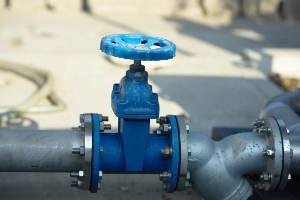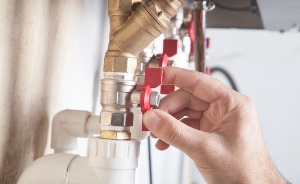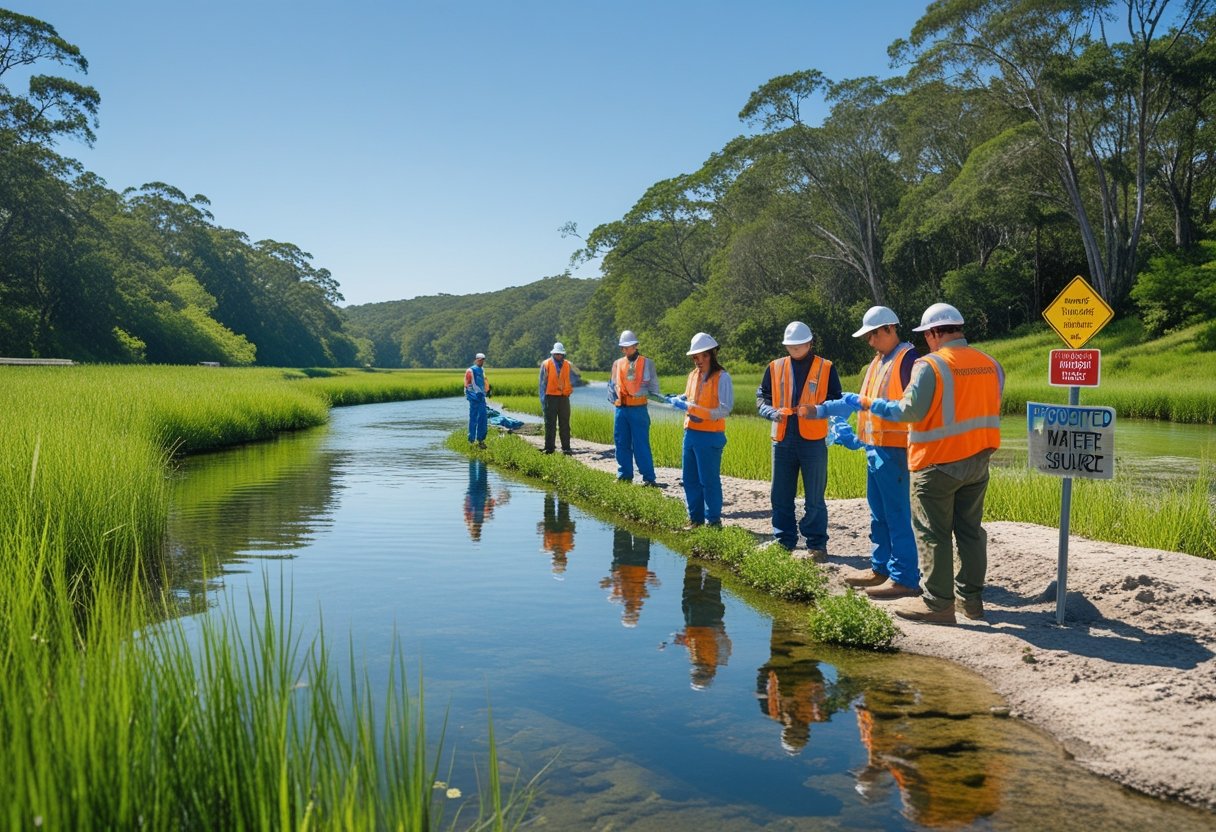When it comes to the safety of your drinking water, concerns about contaminants like E. coli can be alarming. Yes, it is possible to get E. coli from tap water if it is contaminated, often due to issues like sewage leaks or agricultural runoff. Understanding this risk is crucial for you and your family’s health.
Implementing preventive measures can mitigate these risks effectively. One reliable solution is installing a backflow prevention system that ensures contaminants do not enter your water supply. At Pacific Backflow, we help protect your water supply by offering comprehensive backflow testing and installation services throughout San Diego County.
Awareness is the first step in safeguarding your water. Regular testing can identify potential issues before they become serious, ensuring the water you drink is safe. Engaging with experienced professionals like Pacific Backflow facilitates peace of mind and helps you maintain the integrity of your water supply.
Can You Get E. Coli From Tap Water?
Yes, E. coli can be present in tap water, and it is crucial to understand how it can get there and the associated risks. E. coli contamination in drinking water can pose serious health risks if consumed. Awareness and prevention are key to maintaining water safety.
How E. Coli Is Transmitted Through Tap Water
E. coli, specifically the strain known as Escherichia coli, can enter tap water through various channels. Contamination often occurs due to runoff from agricultural areas, where animal waste is prevalent. Once in the water supply, it can multiply and, if not treated properly, can make its way into your home.
Moreover, inadequate water treatment or aging pipe infrastructure can contribute to the presence of E. coli in drinking water. Any breaks or leaks in the system can also facilitate this bacterial contamination. It's essential to regularly test your tap water for bacterial presence to ensure its safety.
Risk Factors for E. Coli Contamination in Tap Water
Several factors increase the likelihood of E. coli contamination in tap water. Areas near farms or livestock operations are at higher risk due to potential runoff. Additionally, urban regions with older plumbing infrastructure may harbor other contaminants that indicate possible E. coli presence, such as total coliform bacteria.
Another risk factor includes heavy rainfall, which can overwhelm sewage systems, leading to spills and contamination. As a property owner in San Diego County, it's vital to have reliable backflow prevention measures in place. Services from Pacific Backflow can help ensure that your water supply remains protected and compliant, significantly reducing the risk of contamination. Regular inspections and proactive maintenance are essential to safeguarding your drinking water from E. coli and other harmful pathogens.
How E. Coli Enters Tap Water Systems
E. coli contamination in tap water primarily occurs through several key pathways. Understanding how this bacteria enters your water supply is essential for ensuring water quality and safety.
Sources of Fecal Contamination
Fecal contamination often begins with agricultural runoff. When rain washes away animal waste from farms, it can enter nearby rivers, lakes, and wells, leading to pollution in municipal water supplies.
Sewage leaks from aging infrastructure can also introduce E. coli into your water system. If sanitation practices are inadequate, fecal matter can infiltrate groundwater sources. It's crucial to heed local advisories about water quality, especially after heavy rainfall or flooding, to prevent potential health risks.
Role of Total Coliform and Coliform Bacteria
Total coliform bacteria serve as indicators of water quality. While many strains of coliform bacteria are harmless, their presence usually suggests fecal contamination.
If you find coliform bacteria in your tap water, it may indicate that E. coli and other pathogens could also be present. Testing for total coliform is a straightforward way to ensure your water is safe. Regular water testing is a key preventive measure. Using a service like Pacific Backflow for backflow testing helps ensure that the water supply remains clean and untainted.
Infrastructure and Water Quality Failures
Aging pipes and inadequate treatment facilities significantly contribute to E. coli contamination. Corroded and broken pipes can allow contaminated groundwater to seep into drinking water systems.
Moreover, failed water treatment processes may not effectively eliminate harmful bacteria. Routine inspections and prompt repairs are essential to maintaining water quality. Employing professionals, such as Pacific Backflow, to regularly test backflow systems helps identify potential issues before they escalate, keeping your water supply safe.
Health Risks and Symptoms of E. Coli Infection From Tap Water
E. coli contamination in tap water can pose serious health risks. Understanding the symptoms, at-risk populations, and how the infection develops in your body will help you prioritize safety and health.
Signs of E. Coli Infection
The primary symptoms of an E. coli infection include abdominal cramps, diarrhea (often bloody), and vomiting. These symptoms typically appear within 2 to 8 days after exposure to contaminated water. Diarrhea may start as non-bloody and then become bloody as the infection progresses.
You might also experience fever, fatigue, and dehydration, particularly if diarrhea is severe. Children and the elderly may show symptoms more intensely, warranting immediate medical attention.
If you notice persistent symptoms or severe pain, contact a healthcare professional promptly to discuss your situation.
Vulnerable Populations and Complications
Certain groups face a higher risk of severe complications from E. coli infections. This includes young children, the elderly, and individuals with weakened immune systems.
In these populations, complications can escalate rapidly. Around 5 to 10% of infected individuals may develop hemolytic uremic syndrome (HUS), a serious condition that can lead to kidney failure. Symptoms of HUS include decreased urination, extreme fatigue, and unexplained bruising.
If you or someone in your family falls into these categories, take every precaution to ensure your tap water is free of contamination. Monitoring Boil Water Alerts is also crucial for community safety.
Infection Process in the Human Body
When you ingest E. coli bacteria through contaminated tap water, they enter your digestive system. These bacteria adhere to the lining of the intestine and can produce toxins that damage the intestinal lining. This damage leads to symptoms like diarrhea and abdominal pain.
After ingestion, E. coli can multiply rapidly, causing inflammation in the intestines. Your body may respond by launching an immune defense, resulting in gastrointestinal symptoms.
The infection can vary in severity, depending on the strain of E. coli involved. In some cases, symptoms resolve within a week, while others can lead to severe complications requiring medical intervention.
Protecting your water supply is vital. Consider services like those offered by Pacific Backflow, which ensures that your source remains safe and reliable.
Detecting and Monitoring E. Coli in Tap Water
Detecting E. coli and monitoring water quality are essential for ensuring safe tap water. Accurate testing methods are crucial for identifying bacterial contamination, while regulations set safety standards.
Testing Methods for Bacterial Contamination
To detect E. coli in tap water, various testing methods are employed. The Most Probable Number (MPN) method is commonly used, estimating bacterial concentration through statistical analysis. Membrane filtration is another effective method, filtering water samples through a membrane, subsequently incubating them on selective media to isolate E. coli colonies.
After initial tests, confirmatory methods, such as gram staining and biochemical tests for β-glucuronidase activity, help differentiate E. coli from other coliform bacteria. Regular testing is vital for households to ensure safe drinking water. If you are concerned about water quality, consider contacting professionals like Pacific Backflow for reliable testing services in San Diego County.
Water Regulations and Safety Standards
Water quality is governed by stringent regulations to minimize health risks. The EPA sets standards for permissible levels of coliform bacteria, including E. coli, in drinking water. These regulations mandate routine monitoring and testing by water utilities to ensure compliance.
Utilities are required to notify the public immediately if E. coli is detected, often leading to boil-water advisories. Residents should stay informed about local water quality reports, which detail compliance with safety standards. Ensuring safe water involves more than just reliance on regulations; proactive measures, including regular backflow testing—such as those provided by Pacific Backflow—are essential for protecting your water supply.
Prevention and Treatment of E. Coli in Tap Water
To effectively prevent and treat E. coli contamination in tap water, implementing various measures is essential. This section highlights methods for filtration, the use of boiling water, and regular maintenance for private wells.
Water Filtration Systems and Technologies
Water filtration systems play a vital role in removing E. coli and other contaminants from your tap water. Various options are available, such as reverse osmosis, activated carbon filters, and ultraviolet (UV) light systems.
- Reverse Osmosis: This system uses a semi-permeable membrane to remove impurities, including bacteria.
- Activated Carbon Filters: These can improve taste and remove chlorine but may not be effective against all pathogens.
- UV Light Systems: These systems are among the most efficient for eliminating bacteria, including E. coli, by disrupting their DNA.
When selecting a system, ensure it meets safety standards. Consider professional assistance, like that from Pacific Backflow, to install and maintain these systems properly.
Boiling Water as a Safety Measure
Boiling is one of the simplest and most effective methods to eliminate E. coli from drinking water. Bringing water to a rolling boil for at least one minute is sufficient to kill pathogenic bacteria.
- Emergency Use: If you suspect contamination, boiling is a quick solution until a filtration system is in place.
- Storage: After boiling, store cooled water in clean, sanitized containers to avoid recontamination.
This method is particularly important during water advisories or when using private wells, where contamination risk may be higher.
Testing and Maintenance for Private Wells
Regular testing and maintenance of private wells are crucial to ensure water safety. If you rely on a well, monitor water quality for E. coli at least once a year.
- Testing Kits: Use reliable testing kits that specifically check for E. coli and coliform bacteria. These are available at local stores or online.
- Maintenance Steps: Keep well areas clear of debris, properly seal well caps, and check for any signs of surface runoff or leaks.
If contamination is detected, consult professionals like Pacific Backflow for advice on corrective actions. Regular maintenance helps ensure a clean water supply and protects your health.
Frequently Asked Questions
Addressing concerns about E. coli in tap water is essential for maintaining health and safety. Below are specific areas of interest related to potential contamination and its implications.
How can E. coli be removed from contaminated water?
E. coli can be effectively removed from water using methods like reverse osmosis, distillation, and UV light purification. Installing a UV light water purification system shines ultraviolet light on the water, which kills the bacteria or renders it harmless. Filters specifically designed to target E. coli can also be beneficial.
What symptoms may indicate the presence of E. coli contamination in water?
Symptoms of E. coli contamination can include gastrointestinal distress, such as diarrhea, abdominal cramps, nausea, and vomiting. If you experience these symptoms after consuming tap water, it could be a sign of contamination. Seek medical attention if symptoms persist or worsen.
Is it safe to wash dishes in tap water if E. coli is present?
Washing dishes in tap water that may contain E. coli is not safe. Contaminated water can transfer harmful bacteria to your dishes, which can lead to illness. It is recommended to use bottled or boiled water for dishwashing until you can confirm your tap water is safe.
Does boiling tap water eliminate E. coli effectively?
Boiling tap water is an effective method to eliminate E. coli. Bringing water to a rolling boil for at least one minute will kill most bacteria, including E. coli. For higher altitudes, boil for three minutes to ensure safety.
What measures should be taken if you suspect E. coli contamination in your water supply?
If you suspect E. coli contamination in your water supply, stop using the water for drinking, cooking, and washing. Contact your local health department for guidance, and consider using bottled water until your water has been tested. Regular backflow testing and monitoring by professionals like Pacific Backflow can help prevent such issues.
Are there risks associated with showering in water that might be contaminated with E. coli?
Showering in water that may be contaminated with E. coli carries health risks. While the risk of illness from skin exposure is lower compared to ingestion, it's still possible for bacteria to enter the body through cuts or abrasions. It's advisable to avoid using contaminated water for bathing until the safety of the water is confirmed.











